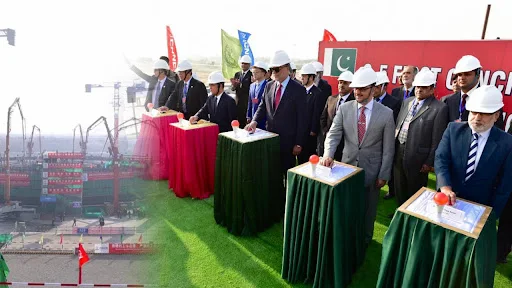The Pakistan Atomic Energy Commission (PAEC) has commenced construction of the Chashma Nuclear
0
December 31, 2024
The Pakistan Atomic Energy Commission (PAEC) has commenced construction of the Chashma Nuclear
Power Plant Unit-5 (C-5), a significant advancement in Pakistan's pursuit of sustainable energy solutions. The first concrete pouring ceremony took place on December 30, 2024, at the Chashma site in Mianwali, marking the beginning of the formal construction phase.
C-5 is designed to be the largest and most advanced nuclear power project in Pakistan's history, with a generation
capacity of 1,200 megawatts (MW). This addition is expected to increase Pakistan's total nuclear energy capacity to 4,760 MW, significantly contributing to the national grid and enhancing energy security.
The project is a collaborative effort between Pakistan and China, reflecting the longstanding strategic partnership between the two nations. The China National Nuclear Corporation (CNNC) is providing technical assistance and expertise for the construction of C-5, continuing a decades-long cooperation in Pakistan's nuclear energy sector.
Federal Minister for Planning, Development, and Special Initiatives, Ahsan Iqbal, who was the chief guest at the ceremony, emphasized that the development of mega projects like C-5, with the support of China, reflects the trust and confidence of Chinese leadership in Pakistan’s economy. He stated, "This investment strengthens the energy sector and demonstrates Pakistan’s potential as a reliable partner in large-scale infrastructure and technological projects."
The Chashma Nuclear Power Complex currently comprises four operational units: C-1, C-2, C-3, and C-4, each contributing significantly to the national grid. These units have been instrumental in providing clean and cost-effective electricity, reducing reliance on imported fossil fuels, and lowering energy costs.
C-5 is an advanced third-generation Pressurized Water Reactor of Chinese Hualong design, featuring both active and passive safety systems, including a double-shell containment and reactor-filtered venting system. It has a lifespan of 60 years, underscoring its role in providing long-term energy solutions for Pakistan.
The project is expected to create thousands of jobs for Pakistanis during its construction phase and provide clean electricity at affordable rates upon completion. Minister Ahsan Iqbal highlighted the need for Pakistan to transition into a technology-driven economy, leveraging projects like C-5 to achieve energy independence and economic growth.
The commencement of C-5's construction is also seen as a step towards environmental sustainability. Nuclear energy is recognized for its low greenhouse gas emissions during operation, making it a viable option for countries seeking to reduce their carbon footprint. The addition of C-5 to Pakistan's energy mix aligns with global efforts to combat climate change by increasing the share of clean energy sources.
The Chashma Nuclear Power Plant has been a cornerstone of Pakistan's nuclear energy program. The first reactor unit, C-1, became operational in 2000, followed by C-2 in 2011, C-3 in 2016, and C-4 in 2017. These units have collectively contributed to meeting the country's growing energy demands.
The groundbreaking ceremony for C-5 was conducted by Prime Minister Shehbaz Sharif on July 14, 2023, demonstrating the government's commitment to expanding the country's nuclear energy capacity. The project is expected to be completed within a span of seven to eight years, with an estimated cost of approximately $4.8 billion.
The collaboration between Pakistan and China in the nuclear energy sector dates back to the 1990s and has resulted in the construction of several operational nuclear power plants in Pakistan, all with Chinese support. This partnership has been instrumental in boosting Pakistan's socio-economic development and reducing reliance on costly fossil fuels.
The Chashma Nuclear Power Plant is located near the Chashma Barrage on the Indus River, providing a reliable source of cooling water essential for the operation of nuclear reactors. The site's strategic location and infrastructure have been pivotal in the successful operation of existing units and will continue to support future expansions.
In conclusion, the commencement of construction on the Chashma Nuclear Power Plant Unit-5 marks a significant milestone in Pakistan's energy sector. The project not only strengthens the strategic partnership between Pakistan and China but also contributes to the country's energy security, economic growth, and environmental sustainability. As Pakistan continues to develop its nuclear energy capabilities, projects like C-5 will play a crucial role in meeting the nation's energy needs and supporting its long-term development goals.
Tags










